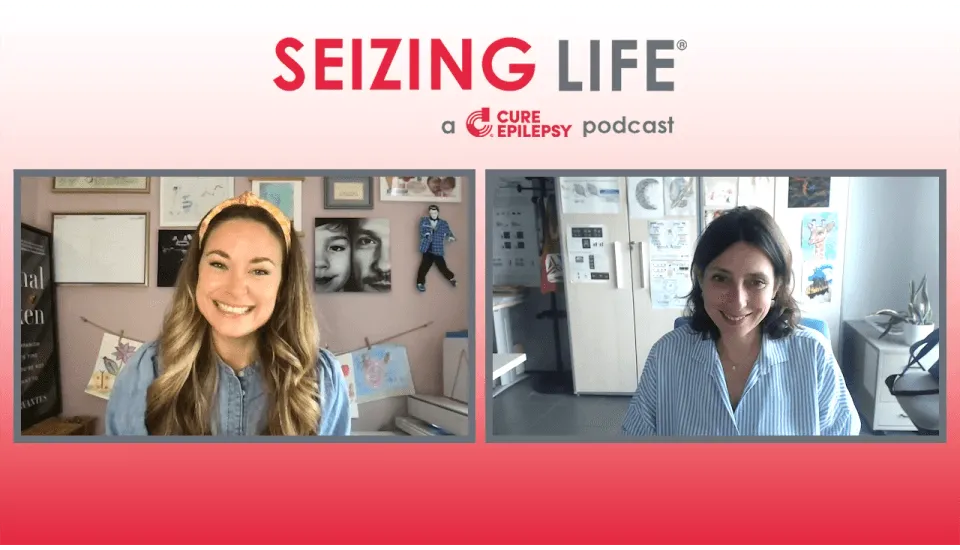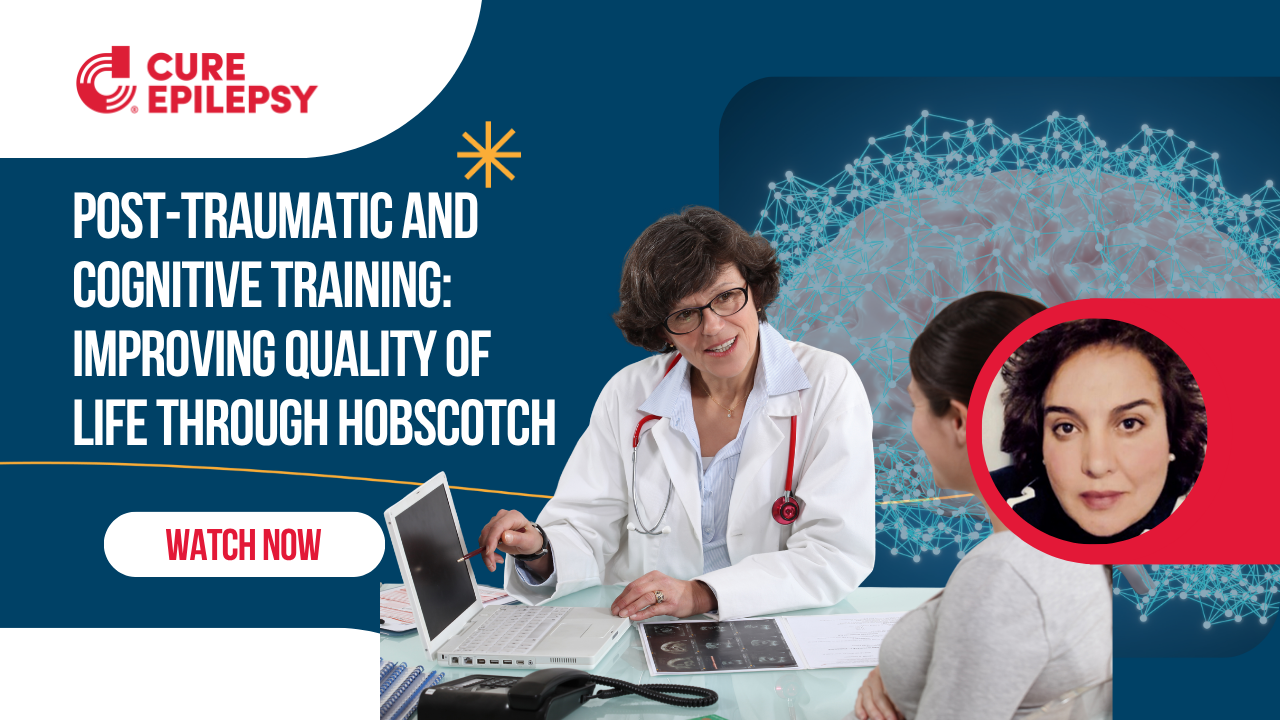Understanding Epilepsy Main Menu
What is a Clinical Trial?
Before a new drug (or device) is made available to the public, it’s important to conduct clinical trials to determine if it reduces seizures and is safe to use. A clinical trial is a research study conducted with human volunteers and is used to evaluate a new treatment’s safety and effectiveness. Clinical trials can also be used to determine if a new treatment is better than an existing one.
The FDA is responsible for evaluating all potential therapies, using the data collected by a clinical trial to determine if the benefits outweigh the potential risks. If they do, the FDA will approve the treatment so that it can be made available for prescription use.
To participate in a clinical trial, click here, or you can also go to clinicaltrials.gov.
THE FIVE PHASES OF A CLINICAL TRIAL
Before a drug can be requested approval from the FDA, it must be studied comprehensively in clinical trials. These trials are grouped into five separate phases. Each phase has a different purpose and helps answer a different scientific question. Devices go through a similar process, but they have three stages of clinical trials (pilot/feasibility, pivotal, and post-marketing) instead of 5 stages.
For simplicity, we explain only the drug clinical trial phases below:
Phase 0: Does the treatment warrant continued exploration?
This phase, which is done on a very small number of healthy people (usually fewer than 15), uses a very small dose of the treatment to ensure that it isn’t harmful. The goal is to determine that the drug acts as expected in people. This phase can help eliminate treatments that don’t behave as predicted, saving time and money. This phase is also sometimes called Pre-phase 1 or a “proof-of-concept” trial.
Phase 1: Is the treatment safe in people?
A small dose of a new drug is administrated to a few closely observed healthy patients. The next groups receive a higher dose, and the process continues until reaching the target dose, or adverse effects are observed. During this phase, investigators study the impact of the drug on the body, the stability of the drug in the body, how the body breaks the drug down (metabolism), and how the drug is cleared from the body. These are the first-in-human clinical studies.
Phase 2: Is the treatment likely to work in patients with epilepsy?
The drug is tested with a larger group of patients with epilepsy or seizures to evaluate its potential effectiveness and further assess its safety. This phase also helps establish the optimal dosing regimen.
Phase 3: Is there compelling evidence that this drug is effective and safe in treating epilepsy?
The drug or treatment is given to many people with the specific disorder that is being studied (eg. focal seizures, absence seizures, Dravet syndrome, etc.) to gather additional information that demonstrates that the new medication is safe and works to reduce seizures. The FDA will use the information collected at this phase to determine whether a new treatment should be approved and under what conditions.
Phase 4: Post-marketing
After the drug has been approved and marketed, additional studies may be conducted to collect more information about risks, benefits, and optimal use of the drug. This phase may also study the effects of the drug on other populations that weren’t initially studied such as children.
WHO PARTICIPATES IN Epilepsy CLINICAL TRIALS?
Clinical trials need volunteers that are both healthy and with the disorder being studied. Decisions on who is ultimately selected are based on the trial’s eligibility criteria, which are designed to help identify the most appropriate candidates to participate in the trial safely. Criteria may include age, gender, type and stage of a disease, previous treatment history, and other medical conditions.
Many different types of people can participate in clinical trials. For each person, the reason may be different, but the most common reasons are:
- To provide a path to help move science forward
- To allow the participant to play a more active role in their health care
- Early access to new treatments that are not yet available to the public
- To help researchers learn more about a certain health problem
- To offer hope for patients and an opportunity for researchers to find better treatments in the future
IS A CLINICAL TRIAL RIGHT FOR YOU?
To determine if a particular trial is right for you, do as much research as you can. Every patient – and every clinical trial – is different. Each clinical trial has its own set of qualifications, time commitments, treatment regimen, and more. To determine if a particular trial is right for you, do as much research as you can.
Here are some other tips and tools to consider as you decide on whether participating in a clinical trial is right for you.
Kim Nye, a mother of two children with epilepsy, shares her advice on participating in clinical trials.
Dr. Darcy Krueger outlines what patients should ask prior to participating in a clinical trial.
Frequently Asked Questions (FAQs)
-
Where can I find a list of clinical trials for epilepsy?
You can find a comprehensive list of epilepsy clinical trials at CenterWatch I Connect Clinical Trials Listing for Epilepsy. This list is a subset of available epilepsy clinical trials that can be found on ClinicalTrials.gov.
-
What is the average length of a clinical trial?
The length of a clinical trial can vary depending on the study protocol, the treatment that is being tested, the specific disorder or syndrome being evaluated, the number of people affected by the disorder, and the ability to recruit people interested in participating in the trial. Some trials last a short period of time, such as 12 weeks, while others can last several years.
-
What are the benefits of participation?
Well-designed and well-executed clinical trials offer a lot of benefits, including:
- The ability to play an active role in managing your healthcare
- The access to new, investigational medical treatments before they are publicly available
- Free treatment
- Access to expert medical care at leading healthcare facilities
- The knowledge that you are helping others by contributing to medical research that may save lives in the future
-
What are the risks of participation?
Clinical trials also pose potential risks, including:
- The investigational treatment may be no better or worse than the current standard of care
- The study treatment may not be effective
- You might end up in the control group and receive a placebo or the standard treatment
- You risk unpleasant, serious, or even life-threatening side effects from the investigational treatment
- The clinical trial protocol may be inconvenient for you, requiring too much of your time and attention, e.g. trips to the study location, additional medical treatments, hospital stays or complex dosage requirements
-
What are the eligibility requirements?
Clinical trials require the participation of both healthy volunteers and volunteers with the illness that the drug will treat. Researchers choose clinical trial participants based on eligibility requirements which vary by trial. Researchers design these criteria to help identify the most appropriate volunteers, or “subjects”, for the trial and to keep volunteers safe. Eligibility requirements may include age, gender, type and stage of a disease, previous treatment history, and other medical conditions.
-
What happens if my condition worsens while I am participating in the clinical trial?
As a study participant, you will have a direct line of contact to healthcare providers who assure your safety and monitor your health. If at any point you wish to withdraw your participation for any reason, let a healthcare provider know that you wish to leave the study. They will work with you to determine the next steps and ensure the transition of your care outside the trial.
-
What is a control (or control group)?
To determine whether an investigational treatment is effective in treating a condition or disease, clinical trials can be designed so that some people receive the treatment being studied, and other people in the trial do not. The set of people in the trial who do NOT receive the treatment being studied is called the control group.
A control group is a standard against which effects of the investigational therapy are evaluated. The control group is usually given either a currently approved treatment for the disease or a placebo. The researchers can then compare the effect that the investigational treatment had on the study group (also referred to as the experimental group) compared to the effect that the placebo or standard treatment had on the control group.
Usually, the trial’s protocol will dictate that participants are randomly assigned to be part of either the study group or the control group. Participants cannot select the group they are in because that would introduce bias into the study results. This type of study design is referred to as a randomized controlled trial.
-
What is a protocol?
A study protocol is a document approved by the FDA that outlines the design for how the clinical trial will be carried out. It is carefully designed to safeguard the participant’s health and to answer specific medical questions. The protocol will detail the trial objectives, trial design, who can participate in the trial, the schedule of tests, procedures, medications and dosages, and the trial length.
The clinical trial will follow a study protocol that outlines the strict scientific standards to protect patients and produce results that help us understand if the treatment is safe and effective. The healthcare team administering the clinical trial may include doctors, nurses, social workers, and other healthcare providers who will monitor your health and give you specific instructions about the study. During a clinical trial, you may have periodic tests or treatments in a hospital, clinic, or doctor’s office. The study protocol will describe all the specific details of the trial such as where, when, and how you will be monitored, as well as the type of health information collected to evaluate the efficiency of the treatment and your overall health while participating.
-
What are side effects?
Side effects are unwanted or undesirable effects that occur as a result of taking the a drug, device, or treatment. Side effects can range from very minor problems such as drowsiness or dry mouth to serious consequences such as pancreatitis or heart issues.
-
What are adverse reactions?
On the other hand, an adverse reaction is an unforeseen effect that occurs when a medication is administered correctly and can generally be addressed by either lowering the dose or stopping the medication. The terms adverse reactions and side effects are often used interchangeably, but technically they have different meanings.
-
What is informed consent?
Before a participant can begin a clinical trial, the people conducting the study must get their informed consent. According to the FDA, informed consent is the process by which a prospective participant learns, “adequate information to allow for an informed decision about” participating in a clinical trial. This process is in place to ensure you understand all the information they provide, including the potential benefits and risks of participating in the study. This is an important time for you to ask any questions that you may have.
The investigator or their staff will explain the details of the study, including its purpose, duration, required procedures, key contacts, and the potential benefits and risks of participating. They will then provide you with an informed consent document to review and sign, documenting that you have been fully informed and agree to participate in the study. They must also give you sufficient time to consider whether you want to participate. During that time, you may find it beneficial to talk to family, friends, or your healthcare provider about whether you should participate.
Informed consent is not a contract, and the participant may withdraw from the clinical trial at any time.
-
What is an investigational treatment?
Drugs, devices, or treatments that have not yet been approved by the FDA for public use, but are being studied, are often referred to as “investigational” or “experimental.”
-
What is a placebo?
A placebo is a substance with no active medication in it. It is often referred to as a “sugar pill.” In some clinical trials, a portion of the study participants are given a placebo instead of the investigational treatment to compare and evaluate the treatment’s effectiveness. Patients in the study will not know if they are receiving the investigational treatment or the placebo.
-
What is a single-masked study?
A single-masked study, also known as a single-blinded study, is a clinical trial design where only the research team, not the participants, know whether they are receiving the placebo or the real treatment.
-
What is a double-masked study?
A double-masked study, also known as a double-blinded study, is a clinical trial design where neither the participants nor the study researchers know who receives the placebo or the study medication. Only a select group of people who do not interact with participants (usually a pharmacist or other medical provider) know who is getting the drug or placebo.
-
What is the Data Safety Monitoring Board (DSMB)?
The Data and Safety Monitoring Board (DSMB) is an independent group of experts that oversees the clinical trial’s conduct and ensures that study participants are safe. The primary responsibilities of the DSMB are to 1) periodically review and evaluate the accumulated study data for participant safety, study conduct, progress, and efficacy; and 2) make recommendations concerning the continuation, modification, or termination of the trial.
-
Does CURE Epilepsy fund clinical trials?
While CURE Epilepsy currently does not fund the type of clinical trials required for FDA approval of a new drug, device, or treatment, we do fund basic (foundational) research and translational research to find cures for epilepsy. These two types of research are critical steps in developing a new therapy and provide initial data that it will be safe and effective in human trials. After these two steps are completed, an investigational treatment can move forward into clinical trials.
-
Is a clinical trial right for you?
Every patient and every clinical trial is different. Each clinical trial has its own set of qualifications, time commitments, treatment regimen, and more. To determine if a particular trial is right for you, do as much research as you can. Meet with the research coordinator and ask them questions relevant to your health, the study, the requirements, and the time commitment. Questions such as those below can help you with your decision. You may have more or different questions, but these serve as a good starting point.
- What is the purpose of the study?
- What is the control for the study? Is there a placebo involved?
- How will the study affect my current treatment regimen?
- What do we already know about the medications that are being tested as part of the study?
- How long will the trial last?
- How often do I need to come to the clinic for the trial?
- What will happen during trial-related visits?
- Does the study require blood tests, MRI, or EEG?
- Where will the trial take place? Will I need to travel?
- How are the costs for the study covered? Do I need to pay for anything? Will my insurance cover this? Are there reimbursements for travel or childcare?
- What happens if I stop participating in the trial? How is my medical care handled?
- Is the long-term follow-up care part of the trial? What would it involve?
- Is the trial HIPAA compliant? Can anyone find out about my participation? If this drug works for my seizures, can I continue taking it even after the trial ends?
Stay in touch
Sign up for our email list and get the latest epilepsy news right to your inbox.









